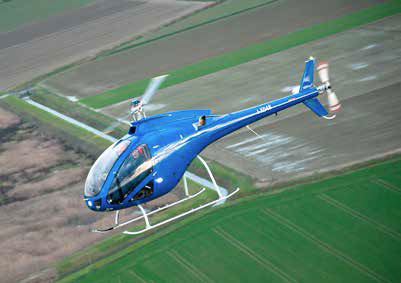On June 22, Zefhir’s exclusive parachute safety system was tested at Oristano-Fenosu airport.
Zefhir is the breakthrough two-seater helicopter designed and manufactured by the Aerospace division of Curti Costruzioni Meccaniche.

Zefhir is the only helicopter in the world equipped with a ballistic parachute. Located above the main rotor, the parachute is designed as a backup for conditions where autorotation cannot be performed due to technical problems, a pilot’s lack of experience or highly adverse environmental conditions.
The test on the system was the first in the world and it has validated the use of ballistic parachute safety systems in helicopters for the first time. Indeed, such a test had never been filmed or documented before in the entire history of aerospace technology.
The parachute does not replace the standard emergency maneuvers used in helicopters i.e. autorotation. However, it can be deployed in dangerous conditions that compromise the effectiveness of the autorotation, such as:
- Flight control failure or loss of maneuverability;
- Flying over an area where emergency landing cannot be performed safely; and
- Flight conditions that prevent restoring rotor rotation speed.
The parachute is housed in a custom-designed aerodynamic carbon fiber containment box, placed above the main rotor. If triggered manually by the pilot, it is ejected using a ballistic system that ensures the parachute correct extraction from its softpack via a controlled breakage of the box’s top cover.
The parachute’s purpose is to save the crew’s life, rather than necessarily safeguard the helicopter – as for the most popular passive safety systems installed in cars.
The helicopter reached forward flight at 30 knots above 300 meters of altitude. The engine was deliberately turned off in order to simulate its failure. The parachute was then ejected and deployed flawlessly, completing the procedure within six seconds of the ejection command.
The helicopter’s descent speed stabilized at less than 7.5 m/s (27 kilometers per hour).
The ground impact resulted in deceleration peaks well within the parameters required for the safeguard of human life, which are normally employed in crash tests in both aeronautic and automotive industries.
In line with the overall “Safety First” spirit of the Zefhir project, the test was carried out with the utmost care for people’s safety, replacing the pilot and passenger with crash test dummies of equivalent mass.
The helicopter was adapted to be remotely controlled, replacing manual commands with electromechanical actuators and adding a control system for the tail rotor and a
flight attitude autopilot.
On the ground, the pilot used remote flight controls to communicate with the on-board computer: an Inertial Measurement Unit and other sensors enabled the computer to control the helicopter flight stability along the trajectory of the test mission.
The test was greatly helped by a specific research carried out by the Aerospace Faculty of the Bologna University, which collaborated with Zefhir’s technical staff to develop the helicopter’s stabilization system.
The successful test proves Curti’s ability to manufacture complete avionic systems, which might open up future opportunities to develop increasingly challenging projects in the field of Unmanned Aerial Vehicles.
The test demonstrated that the intuition that inspired the device was right and functional. Its success rewards the many people involved in designing and building this innovative ballistic parachute safety system.
The project was a success also thanks to co-funding from the European Commission to a consortium between Curti, PBS Velká Bíteš from the Czech Republic and Junkers Profly from Germany: this international cooperation led to the development of a disruptive new system for the global market.









